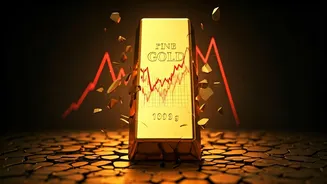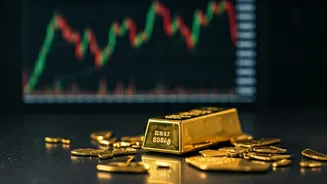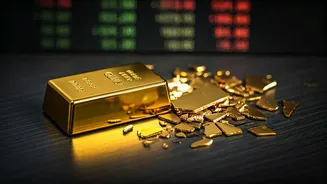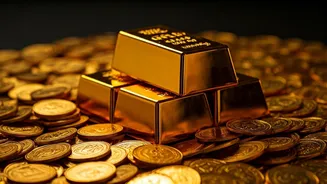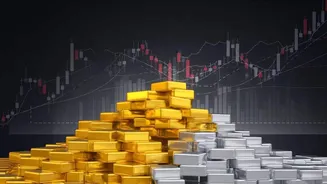Market's Sudden Shock
The gold market was taken by surprise as prices experienced a substantial downturn, marking the largest single-day drop since 2013. The prices were reported
to have fallen over 5%, reaching levels that raised eyebrows among traders and investors. This sudden decrease contrasted with the previous period of relative stability, prompting immediate questions about the underlying causes. Market analysts quickly began evaluating possible triggers, including shifts in global economic indicators, alterations in investor sentiment, and fluctuations in currency values. The impact was immediately felt as traders started adjusting their strategies, and investors began closely monitoring the situation.
Factors Behind the Crash
Several factors combined to trigger the significant drop in gold prices. A strengthening of the US dollar was a primary driver, as a stronger dollar typically makes gold more expensive for holders of other currencies, decreasing demand. Increases in Treasury yields also contributed, as investors turned towards these higher-yielding assets. Furthermore, changes in inflation expectations, and actions taken by the Federal Reserve, played a crucial role in altering the appeal of gold as a safe-haven asset. Additional contributing factors included profit-taking by investors, after a period of price appreciation. Market analysts also pointed to fluctuations in the global economy and emerging trends in investment strategies as influencing factors, accelerating the downturn.
Silver's Parallel Plunge
Silver, closely linked to gold in the precious metals market, also faced a significant price decline, mirroring the negative trends observed in gold. The silver prices plummeted by approximately 7%, which intensified the overall downward trend within the precious metals sector. This mirrored movement highlighted the close relationship between the two metals, with both typically influenced by similar market dynamics and investor behaviors. Factors like the strong dollar, rising treasury yields, and shifts in investor sentiment contributed to silver's decline, reflecting the broader market environment influencing both metals. The impact was immediately felt across markets, as investors reassessed their investment portfolios.
Gold Price Forecasts
Predicting the future course of gold prices is inherently complex, given the multitude of factors that affect market dynamics. However, many analysts provide forecasts based on current market trends and potential economic shifts. The short-term outlook following the crash remained uncertain, with analysts divided on whether prices would rebound or continue to decline. Factors like the actions of the Federal Reserve, the strength of the US dollar, and prevailing inflation rates, will continue to play a pivotal role. The long-term perspective included considerations about sustained demand from emerging markets and the continued role of gold as a safe-haven asset in uncertain global economic conditions. Investors closely watch these forecasts to make informed decisions about their portfolio strategies.
